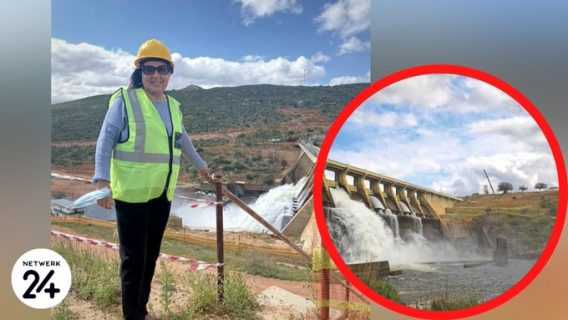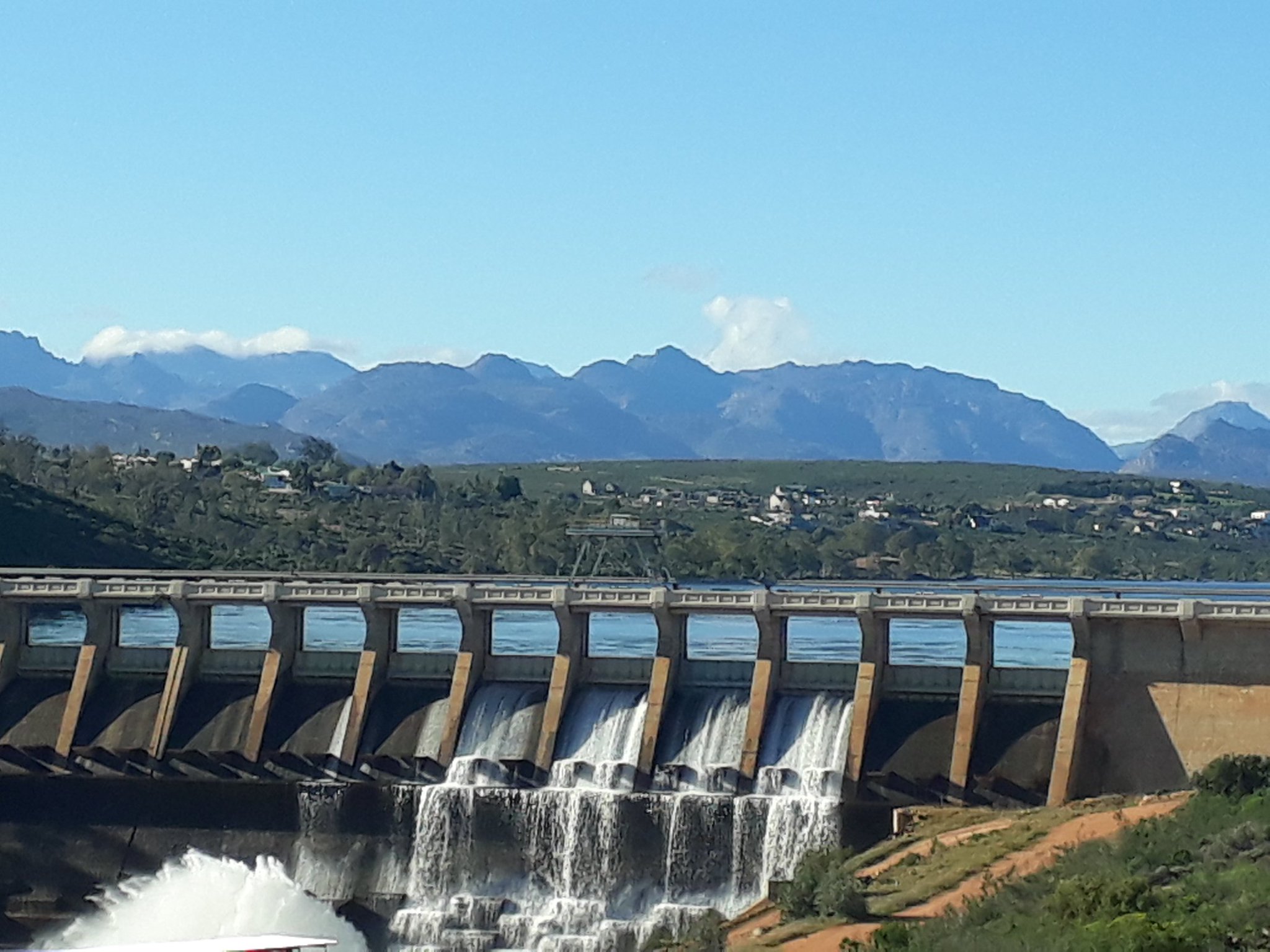When did the construction of Clanwilliam Dam start?
According to Anton Bredell, the province’s climate will become hotter and drier as a result of climate change. With more than 100 000 people moving to the Western Cape each year due to population trends, he stated that more is required to be done in terms of water infrastructure.
Bredell further expressed his concerns regarding the delays in the construction of the Clanwilliam Dam. In order to address this, he said he would need to meet with both the national ministers of public works and water and sanitation.
Bredell added that he recently visited George to assess the progress being made with an addition to their new water treatment plant. He said that he was briefed on the progress made with the construction of the Clanwilliam Dam in Worcester built by the Breede Valley Municipality.
It was further mentioned that the George Municipality is establishing an extension to their new water treatment plant that will have a capacity of 20 megaliters per day.
The total cost for the extension
The budget for this multi-year project is R263 million for civil engineering construction work and R220 million for mechanical and electrical work. According to Bredell, the project’s aim was to provide water security for both the existing population and any anticipated future development.
In order to meet its future water needs, the Breede Valley Municipality is constructing a new 20-megaliter reservoir. The R74 million project’s construction began in April and is expected to be completed in August 2023.
An overview of the Clanwilliam Dam redevelopment project
The Clanwilliam Dam project is a part of the National Department of Water and Sanitation (DWS) Water Resource Programme. On July 2020 it was one of the Strategic Integrated Projects (SIPSs) was gazetted in line with the Infrastructure Development Act.
SIPSs is a vital part of the Economic Reconstruction and Recovery Plan (ERRP) aiming to revamp the economy and help in reviving sectors like construction. Moreover, it is part of the Infrastructure Investment Plan approved by the Cabinet on May 2020.
The project’s stakeholders consist of, SANRAL, ESKOM, the Cederberg, DWS, and the Lower Olifants River Water User Association. In addition, the Western Cape Government, Matzikama, and West Coast municipalities are also a part of the implementing team.
Read Also: Grand Renaissance Dam (GERD) project timeline and what you need to know
The scope of the project
The Clanwilliam Dam project forms part of the Olifants Doorn River Water Resources scheme. The scheme is valued at approximately R4billion.
The dam was first delivered in 1935. With time, the sandstone foundation fractured and the concrete deteriorated. These factors, therefore, compromised the safety of the dam. To deal with this issue several technical proposals were made. The proposals included the introduction of anchors on the existing concrete apron and deeper foundations to suitable bedrock.
Investigators identified the need for remedial work on Clanwilliam Dams’ existing foundation. They revealed that the works consequently provided an opportunity to raise the dam wall to improve dam capacity.
Implementation and expectations of the project
The first phase of the Clanwilliam Dam redevelopment project included raising the wall by 13 meters. In addition, it included improving the foundation of the dam. As a result, the works would lead to an addition of the capacity of the dam to 70 Million cubic meters per annum.
Additionally, they would augment the water supplies to the Olifants River irrigation project located in the northwestern part of the Western Cape Province. Furthermore, they would assist in the development of resource-poor farmers.
The second phase of the project on the other hand would help in the utilization of the additional yield of water in supplying the ecological water requirements. Additionally, it would help with offering existing water users a more assured supply and using the added water for new irrigation activities by emerging farmers.
Lastly, it would be crucial in offering for future growth of industrial and domestic water supply, taking water losses into account.
Summary
Name: Clanwilliam Dam redevelopment
Type: Concrete gravity
Location: South Africa
Impounds: Olifants River
Height: 43 m (141 ft)
Length: 235 m (771 ft)
Total capacity: 121,800,000 m3
Surface area: 1,124 ha (2,780 acres)
Timeline of the Clanwilliam Dam project
1935
Clanwilliam Dam with a height of 37 meters was developed as a means to get irrigation water to the downstream agricultural region.
1964
Its original height of 37 meters was extended to 43 meters. It had a capacity of 121,800,000 cubic meters. This was reportedly able to offer a significant volume of water to a large portion of residents.
2015
An infrastructure development company was appointed to give supervision and contract management of the Clanwilliam Dam redevelopment project.
As of August 2015, the dam was set to be raised by 13 meters. This would subsequently raise more than 70 million cubic meters capacity of water.

May 2021
The project suffered massive delays due to various challenges. The following briefly highlights these challenges which continue to impact the progress of the raising of the dam:
- Procurement of key suppliers and subcontractors
- Another important matter that needs to be addressed urgently is that the construction team has endured a loss of skilled staff due to delays in the project.
- The Department of Water and Sanitation revealed the Clanwilliam Dam project is significant to be budgeted and delivered.
August 2021
Construction works on South Africa’s Clanwilliam dam to be completed by 2023
Construction works on South Africa’s Clanwilliam dam are set to be completed by March 2023. The concrete gravity dam on the Olifants River, near Clanwilliam, Western Cape, South Africa is undergoing a US $229m wall-raising works. The works will see the capacity of the dam double after the existing wall is raised by approximately 13 meters.
“Practically the project means an entire wall being built against the current one. However, this new wall will be 13 meters higher. The original walls of the dam were built in early 1935. They, therefore, require maintenance to sustain the Clanwilliam dam’s integrity. The project aims to address all those concerns raised,” said Anton Bredell.
The latter is the Environmental Affairs and Development Planning Minister of Western Cape Local Government.
Also Read: Construction of the Garden Route Dam Spillway in South Africa on track
Significance of the project
The National Department of Water and Sanitation has seen significant progress in the first phase of the project. This phase led to the relocation of the N7 highway in the region of the dam.
The doubling of the capacity of the dams comes with a lot of benefits for residents of the Free State. This was said by the Western Cape Agriculture Minister Dr. Ivan Meyer. The latter said that more especially the project would benefit residents engaged in the agriculture sector. He added that irrigation will boost growing cash crops and enhance business activities in the region.
“Doubling the capacity of the dam will allow more irrigation in the region with an additional 5 500 ha. As a result, 3800 jobs could be created thereby enhancing the economy of the Western Cape,” noted Dr. Meyer. Moreover, Mr. Bredell pointed out that with the dam 100% full after the rainfall season, the sluices have been opened showing the added capacity will not go to waste. It will instead or rather be utilized successfully.
Early on in 2018, Western Cape farmers had expressed fears over the project’s progress. This came after the Western Cape provincial government announced that the Water and Sanitation Department had run out of money years after the US $132m had been allocated for the same.


will these dams have hydroelectric generation systems built in ,as last power generation dam was built in 1977..south africa only (5) power generation dams.